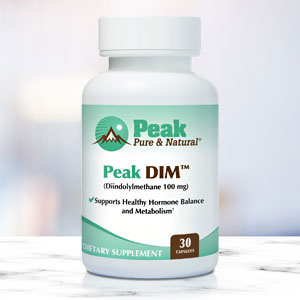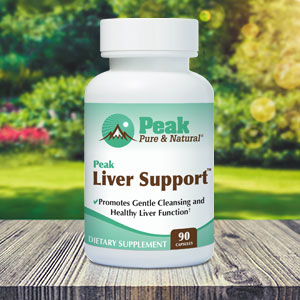Get Easy Health Digest™ in your inbox and don’t miss a thing when you subscribe today. Plus, get the free bonus report, Mother Nature’s Tips, Tricks and Remedies for Cholesterol, Blood Pressure & Blood Sugar as my way of saying welcome to the community!
The chemicals causing high cholesterol

Just a few months ago, I wrote here about an NYU study proving phthalates, a class of endocrine-disrupting chemicals found in plastics and many personal care products, are responsible for 100,000 premature deaths among older Americans each year, mostly from heart disease.
Phthalate exposure is believed to occur through the buildup of these toxins as consumer products break down and are ingested. The worst culprits? Plastic food containers and even the chemical-laden wrapping your burger or burrito come in.
Previous research has shown that these chemicals rob testosterone, which is an early indicator of cardiovascular disease.
But more research at the University of California has dug further into the underlying mechanisms behind the phthalate connection to heart disease…
Better plastics, higher cholesterol
A team led by Changcheng Zhou, a biomedical scientist and professor at the University of California, Riverside School of Medicine, has found that a widely used phthalate stimulates higher cholesterol levels in studies involving mice.
Dicyclohexyl phthalate, or DCHP, is a widely used chemical found in paints and adhesives, as well as in plastic and rubber products. It is used to harden or stabilize the texture of these products.
But it does something else, too. Something deadly.
DCHP binds to a receptor called pregnane X receptor, or PXR.
PXR is found in our gut, and its job is the absorption and transport of cholesterol.
“DCHP ‘turns on’ PXR in the gut, inducing the expression of key proteins required for cholesterol absorption and transport, says Prof. Zhou.
“Our experiments show that DCHP elicits high cholesterol by targeting intestinal PXR signaling.”
In other words, the chemical DCHP stimulates receptors in our gut to absorb cholesterol, whether or not our body needs it.
Prof Zhou and his team also found that mice exposed to DCHP had ceramides in their intestines.
Ceramides are a class of waxy lipid molecules, and they’re associated with cardiovascular disease risk in humans.
How to protect yourself
It’s important to note that information about the cardiovascular effects of DCHP are not being applied to consumer safety standards yet.
On the U.S. Consumer Product Safety Commission website, a 2014 report on phthalates (the most recent) lists DCHP as one that is not banned, and that has no human and only limited animal research regarding its toxicity.
This means that you must protect yourself.
DCHP is found in the following products:
- Glues
- Wood filles
- Putties
- Plasters
- Modelling clay
- Finger paints
- Non-metal surface treatment products
- Inks and toners
- Polishes and waxes
- Textile dyes
- Fragrances and air fresheners
- Automotive care products
Read your product labels or, better still, avoid these products altogether.
Also, be aware that DCHP is not the only type of phthalate linked to heart disease and early death.
Remember that NYU study I mentioned at the beginning of this post?
It showed that older adults with the highest concentrations of phthalates in their urine were more likely to die of heart disease.
Your eating habits — avoiding foods stored in plastic containers or fast food wrapping — can play a big part in keeping those phthalates out of your body.
But the products listed above that can expose you to DCHP aren’t on your dinner plate — they’re all around you.
Your best bet is to support your body’s natural detoxification processes by supporting your liver. In addition to increasing your liver’s detoxification enzymes by eating cruciferous vegetables, you can find eight other ways to reduce your harm from these killer chemicals here.
Editor’s note: Have you heard of EDTA chelation therapy? It was developed originally to remove lead and other contaminants, including heavy metals, from the body. Its uses now run the gamut from varicose veins to circulation. Click here to discover Chelation: Natural Miracle for Protecting Your Heart and Enhancing Your Health!
Sources:
Study links high cholesterol, cardiovascular disease to plastics — Science Daily
Effects of Dicyclohexyl Phthalate Exposure on PXR Activation and Lipid Homeostasis in Mice — Environmental Health Perspectives
Deaths linked to ‘hormone disruptor’ chemical costs billions in lost US productivity — Eureka Alert














